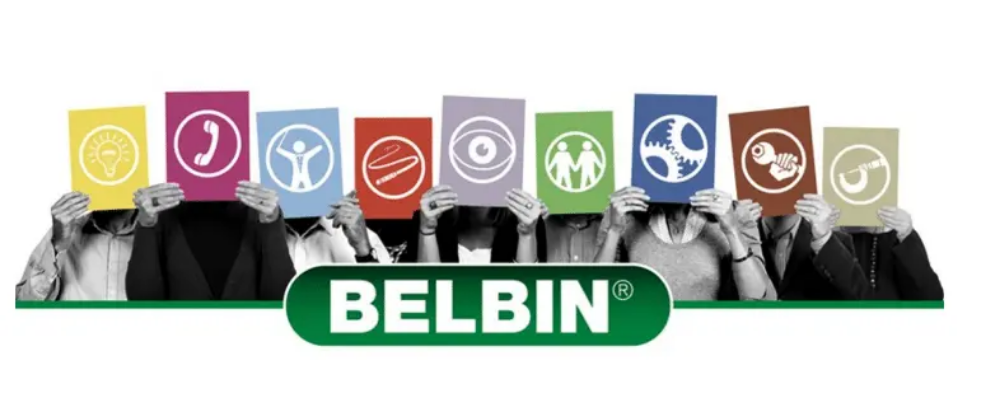While many of us enjoyed the privilege of working from home on occasion, no one could prepare us for the rapid shift that took place when the pandemic forced all non-essential workplaces to continue operations from home. The Harvard Business Review describes the global coronavirus pandemic as the “most significant social experiment of the future of work in action” whilst Deloitte characterises coronavirus as “a time machine to the future”.
One thing that didn’t change was the need for positive workplace cultures. Workplace culture is one of the most powerful sources of competitive advantage (Forbes, 2020) as it is a business ‘personality trait’ your industry rivals cannot replicate.
Generally speaking; workplace culture is not something you can change overnight (pwc). It is a collective effort of small behavioural changes embraced by a team to create a more pleasant and enjoyable environment. This past year however the pandemic has forced upon us staff layoffs of valuable team members, environmental changes in our workplace and challenged us to connect and communicate. Unfortunately for many when coming together was more important than ever the pandemic forced cultures apart. The fear introduced an “I” behaviour rather than a “we” behaviour.
So how do you maintain and enrich workplace culture when the world around us is in crises?
Below are three handy tips extracted from my latest e-book Inside the COVID Culture Crash.
If you are a regular reader then you know I I believe practising a positive team culture requires…
- Education
- Engagement
- Environment
The following strategies are broken down into each ‘E’ for maximum impact.
01
Education: Behavioural profiling
You don’t have to love every single person you work with but you do need to respect what each person brings to the team. After everything we have been through with the adjustments Covid has bought about; it’s a good time for self-reflection on the strengths you bring and how that fits in with the value that your team bring to your clients and to your company.
On a basic level, behavioural profiling is all about greater understanding; greater understanding of yourself, your employees, and how your team can work more effectively as a unit and also what else you may need in your team.
One of the best models used today for behavioural profiling is Belbin.
A Belbin behaviour profile is a simple yet very clear explanation of what a person’s strengths are within a team and what others within the team value in that person.
It’s an incredibly effective tool for identifying who you need on which team to get a specific outcome in the fastest possible time frame and with the right amount of people.
That is such an important statement, I want to highlight a few key phrases…
It’s an incredibly effective tool for identifying ‘who you need’ ‘on which team’ ‘to get a specific outcome’ ‘in the fastest possible time frame’ and ‘with the right amount of people’.
The power of this knowledge can be used to positively impact employee job security, help build high performing teams and allow businesses the ability to fill new and emerging job roles during “hiring freezes.”
During a time when many businesses are seeking specific skill sets internally; investing in a tool like Belbin can support a positive team culture to thrive in an ever-changing and unstable environment.
For more information on Belbin Team Roles Online please follow the link or contact one of our consultants on 1300 28 29 63 to discuss your teams’ requirements.

02
Engagement: Measure Team Happiness
Management thinker Peter Drucker is often quoted as saying that “you can’t manage what you can’t measure.”
Before we get into the tools to measure team happiness lets discuss why it is so important to evaluate. Employee happiness has a proven positive impact on productivity (+45%), energy (+180%) and innovation (+300%) (2daysmood, 2020). In addition, 39% of employees say they would work harder if they were happy in their current position (2daysmood, 2020).
Measuring your team’s happiness does not need to be complex or time consuming (and it shouldn’t be). Simply asking team members to rate their happiness intermediately can give you enough insight to address potential concerns, surface the current mood and lift your team’s happiness.
A simple tool:
Create a 1- 5 scale
Have fun with this and resist the urge to use the obvious 1 being unhappy and 5 being happy. As you know from my previous articles, I am an advocate for fun in the workplace and this scenario is no exception. You could relate your scale back to your company values or get creative and invite your team to create a happiness scale. At Corporate Challenge we use the FISH! Philosophy as the foundation of our happiness scale and it works a treat. Each day employees choose their attitude (one of the four key practices of FISH!) and post it in a staff group Whatsapp.
Choose a Time Frame
During demanding periods, you may choose to measure team happiness daily or weekly whereas this can stretch out to fortnightly when the office vibe is a little more relaxed. The key here is to keep it simple, quick and fun so team members do not feel this is a time-wasting or daunting exercise.
Choose a Data Collection System
This does not need to be extravagant and could be as simple as a communal chart put up in the office (for hybrid teams) with the rating options down the vertical axis and the dates across the horizontal axis. Leave some bright coloured stickers and instructions for employees to submit. If you are working completely remotely, there are plenty of online tools like WhatsApp, Facebook Groups, or even some CRM’s have the ability to install a mood tracker.
Like any effective tactic, taking action is the most important step. Immediately following collecting the data, address specific responses to get a deeper understand of the emotions driving the response. For example, asking what triggered a person to provide a particularly positive or negative score can provide valuable insight and at times moments of connection and understanding for the team as a whole.

%
of employees say they would work harder if they were happy in their current position
03
Environment: Encourage Water cooler moments
As we continue to work remotely for the foreseeable future and many businesses choosing to adopt a work from home policy long term its important that we do not underestimate the influence our physical presence plays on our workplace culture. Once taken for granted, many of us who are working remotely can’t quite put our finger on “what is missing’ in our day-to-day work lives….
The answer is what I like to refer to as the ‘water cooler moments.’ These are the unplanned moments shared with team mates where we engage in non-work-related chatter; it could be discussing what we did on the weekend or debriefing on the latest episode of the top reality tv program of the time.
You may be wondering how encouraging my team of employees to engage in mindless reality tv is beneficial to our workplace culture?
Well far from being harmful to productivity, studies show that casual workplace conversation and no-pressure socialising actually leads to a multitude of benefits, including increased productivity and collaboration, the establishment of trust between employees, and strengthened team building and engagement (Dreamhost, 2020).
So how do you recreate these water cooler moments in a remote working environment?
These once accidental conversations must now be scheduled. Whilst it won’t mean they lose their myriad of benefits; it does mean that leaders are now responsible for such office camaraderie taking place.
Try infusing a water cooler moment in your morning video conference by sending groups of employees off to break out rooms to discuss non- work-related items. Try encouraging a relaxed vibe by giving topics to discuss such as:
- One thing your team mates may not know about you.
- Something you did on the weekend that made you happy (a favourite of my teams)
- Your latest Netflix binge worthy recommendation.
How, when and what to be discussed does not matter, the key here is to create the time and space for de-stressing with non-work-related banter.
Positive Team Cultures thrive on energetic relationships and connection, promote exceptional team work, empower and inspire one another to grow and provides environments that encourages opportunities to excel. These wonderful benefits can all be enjoyed by a remote team with the right leadership, team mindset and tools to thrive.


If you would like more information on any of these strategies, you are most welcome to contact me or any of my team at Corporate Challenge Events.
We are focused on creating positive team cultures! We can provide further advice, or deliver a team building program or team building workshop to support your team to succeed.





Recent Comments